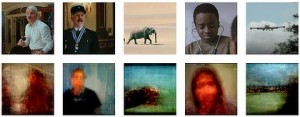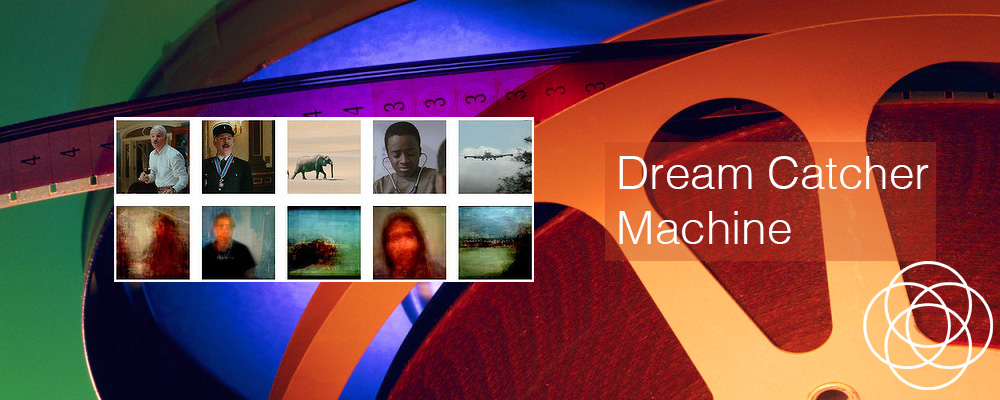Imagine downloading movie clips of your dreams each morning.
“What did you dream last night?”
“No idea. Hang on a minute, I’ll have a look.”
Research published this month in the journal Current Biology has led to speculation that this may be possible in decades to come. While no-one has yet captured footage of dreams, what they have captured is computerised reconstructions of what’s going on in the visual area of the brains of people watching movie clips. The computers processed information from fMRI scanners measuring the visual brain activity of volunteers watching movie clips, and came up with good, though blurry, matches.

Top row: original movie clip images. Bottom row: computer reconstructions of same images from brain scans of volunteers watching the movies. Photo: Shinji Nishimoto
The computers had been programmed to recognise certain images from the brain activity data, such as people, and not other images, such as elephants, but faced with the task the computers constructed what one of the researchers, Jack Gallant, described as “a shambling mound” when the brain in question was watching an elephant moving across the screen.
Gallant, a neuroscientist at the University of California, Berkeley, sees the technology as being potentially useful for stroke patients in the future, and also speculated on using the approach to reveal dreams and hallucinations.
Marcel Just, director of the Center for Cognitive Brain Imaging at Carnegie Mellon University, (who didn’t participate in the study), said, “I’d give 50 or 100 dollars to see dreams of mine with that [current level of] quality.”
Wow. Yet with a little training he’d be able to remember his dreams in vivid detail, as well as recall the experience of being totally immersed in each dream instead of watching it, objectively, as a blurred movie.
And there’s the key thing – the dream experience. No doubt this technology, if ever it were developed into a dream recording device, would incorporate information from other areas of the brain involved in sensing dreams – hearing, tasting, smelling, touching – as well as recording the dreamer’s emotional responses.
A dream cannot be interpreted from visuals alone, just as a dream cannot be interpreted by looking up dream symbols in a dream dictionary. Two dreams might look the same from a visual perspective, but much of the interpretation depends on each dreamer’s emotions within the dream, on the verbals, the sensual experiences, and so much more.
An elephant in my dream may look just like an elephant in your dream, but you might describe your elephant as majestic, or weary, and I might describe the elephant in my dream as shambling. The interpretation of our dreams in each case would be different, as our different perceptions of the same animal reveal something about us as individuals.
So what does that say about Jack Gallant’s interpretation of the computerised image of an elephant as a shambling mound?
More info: news article

